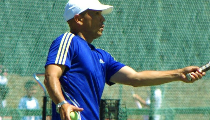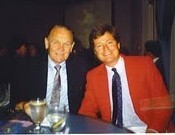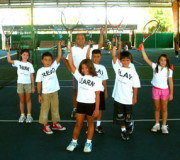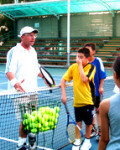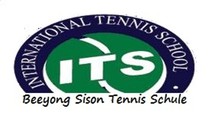ITS History
Basel: a quick look
Basel is located in the northern part of Switzerland on the Rhine, at the mouth of the Birs and Wiese rivers where the French, German and Swiss borders meet. Basel functions as a major industrial center for the chemical and pharmaceutical industry.
The Basel region, culturally extending into German Baden-Württemberg and French Alsace, reflects the heritage of its three states in the modern Latin name: "Regio TriRhena". It has the oldest university of the Swiss Confederation (1460). Basel is German-speaking. The local variant of the Swiss German dialects is called Basel German.
Basel is home to Switzerland 's oldest university founded by Pope Pius II in 1460 who had been in Basel for the Ecumenical Council (1431-1439). With the Dutch scholar Erasmus teaching at the university (1521-1529), the city became a center for humanism and the reformation of Switzerland.
Erasmus is considered as the greatest scholar of northern Renaissance, the first editor New Testament who helped build what may be called the liberal liberation of European culture.
At present the university is well-known for life sciences, but it has a comprehensive range of faculties: theology, law, medicine, humanities, science, business and economics, and psychology. There is a long list of famous people associated with the oldest university. Some of them include French Reformer John Calvin (Jean Cauvin), Paracelsus, Daniel Bernoulli, Jacob Burckhardt, Leonhard Euler, Friedrich Nietzsche, Eugen Huber, Carl Jung, Karl Barth, and Hans Urs von Balthasar.
Basel Lawn Tennis Club
While playing the European tour in 1980, Beeyong Sison first learned of the Basler Lawn Tennis Club (BLTC est. 1907) when he was invited to become a member of the club's Inter-Club team by his colleagues and friends, Edgar Schurmann and Markus Guenhardt, both were members of the Swiss Davis and King's Cup teams.
Basler Lawn tennis Club (BLTC) has a rich tradition and history which dates back to 1911 when the first international championships was held. The golden era for BLTC was when they won the prestigious Swiss National Inter-Club A League Championships in 1957, 1959, 1960, 1961, and again in 1963. The resurgence of the BLTC era was exemplified during Beeyong Sison's tenure, as pro-player and subsequently as playing coach, when they won the Swiss Championships in 1982, 1988 and 1991.
Some members of the BLTC team were named to the Swiss Davis Cup team. In 1982, Sison was named the league's most valuable player after winning all singles and doubles matches throughout the season. During tournament breaks, Sison was involved in the club's junior training providing comprehensive development program.
Conception
As coach, Beeyong helped develop several junior players become the country's best. Even though Basel became the center point of the region's junior talents, the prevailing system caused many to drop out of tennis before they reached the age of fifteen.
Most training systems embarked on an “early specialization” whereby children, even at the early age of ten or eleven, would be subjected to numerous hours of training using methods of monotonous drills called “drills and grills” and then compete for high rankings. “Winning is not everything, it's the only thing” became the usual motto for unwitting coaches and over-involved parents wanting to produce the next tennis child star.
Enormous strains were being laid onto children's shoulders and as a result – poor school performance, injuries, decrease in participation or just plain sick and tired of tennis were reported by concerned teachers and parents.
By 1989, due to popular demand and sensing the need to counteract the negative atmosphere pervading the tennis community, Beeyong formally established the International Tennis school in Basel (ITS). Sison endeavored to provide a long-term comprehensive development program for the youth. With support from the community, and a clear understanding from the children's families and schools, ITS embarked on a concept that laid a strong foundation in addressing the students' development.
Principle
Sison, whose combined passion for music, the arts and athletics as well as academics, promoted and encouraged a well-balanced scheme of development. His method of teaching was based on the principle of nature and nurture, a child's growth with proper activities through unhurried time – a good mind and spirit must develop with a good body.
A staunch follower of both Rousseau and the Pestalozzi principle (18 th century Swiss philosophers) of “learning through play”, Beeyong believes that:
“The foundation of education should be organic, meaning that intellectual, moral and physical education (or in Pestalozzi's words, development of “head, heart and body”) should be integrated and the education should draw upon the faculties or “self-power” inherent in human being.
"Training should be literally the drawing-out of this self-power, a development of abilities through activity; -- in the physical field by encouraging manual work and exercises, in the moral field by stimulating moral actions, and in the intellectual field by eliciting the correct use of the senses in observing concrete things accurately and making judgments upon them. Words, ideas, practices and morals have meaning only when related to concrete things."
These principles were interpreted in the playing field where children are started out by conceptualizing – muscle memory (physical relations to materials) and a strong ground in basics and fundamentals. Results have been astounding as parents report improvement of their youth's study and work habits, self-esteem and confidence, and a sense of realistic achievement.
The ITS program is “child-centered” not subject centered where there is emphasis on object lessons that acquaint the young with realities of life. The development of skills is emphasized, not for their own sake, but in connection with intellectual and moral growth.
The activities strive to learn the nature of the child in order to determine the details of his training. This means that the stages of training must be related to the stages of youth development. ITS program gives the child a positive experience through sport training which can be used as a spring-board for future activities of interest.
Based on experience and study, age consideration must not be the decisive factor in measuring a youth's progress since some athletes are far ahead from others in development and performance growth while others who develop slowly catch up at a later period and achieve excellent results.
Chronological age is not always an accurate indicator of development. Since competition in the game is more intense and success is more difficult to come by, both success and failure must be treated one and the same and must not deter players from reaching the standards they have set for themselves.
The word competition comes from two Latin root words 'com' and 'petere' meaning to seek together. True competition is identical with cooperation. When two performing individuals match their skills against each other, both are able to elevate their respective level of performance. Overall winning may not be as significant as the value and satisfaction gained from self-improvement.
> Home > ITS Philosophy



